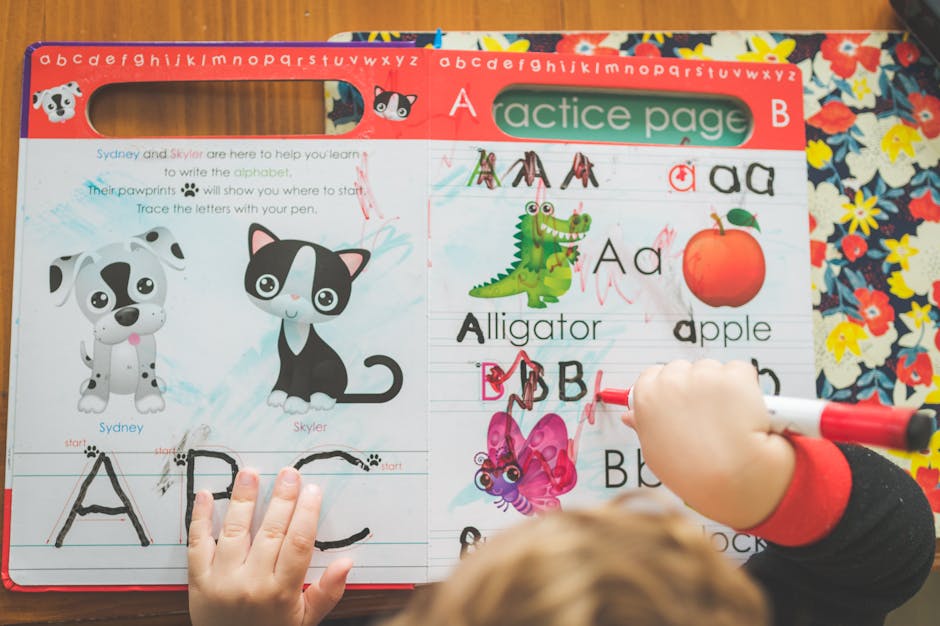Arabic Alphabet Tracing: A Practice for Beginners
Learning a new language is akin to unlocking a door to a new world. If you’re embarking on the journey of learning Arabic, mastering the alphabet is a crucial first step. Tracing the Arabic alphabet can be both enjoyable and rewarding, giving you a solid foundation for further learning. In this guide, we’ll explore how you can effectively practice Arabic alphabet tracing as a beginner.
Table of Contents
1. Introduction to Arabic Alphabet Tracing
2. Why Start with Tracing?
3. Tools You Need 🛠️
4. Step-by-Step Tracing Guide 📝
5. Tips for Effective Practice 🚀
6. Conclusion
7. FAQ
Introduction to Arabic Alphabet Tracing
The Arabic alphabet consists of 28 letters, each with its own unique shape and sound. Unlike the Latin script, Arabic is written from right to left, which can be a fun challenge for beginners! Tracing these letters helps imprint their forms and sounds into your memory.
Why Start with Tracing?
Tracing is a powerful tool for beginners for several reasons:
1. Visual Learning: Seeing and replicating the letter shapes helps with memorization. 📚
2. Muscle Memory: Writing out letters aids in building the muscle memory needed for fluid and confident writing.
3. Focus and Attention: Tracing requires concentration, which enhances your learning experience.
Tools You Need 🛠️
Before you start tracing, gather these tools:
– Tracing Worksheets: Many online resources offer free printable Arabic alphabet tracing sheets.
– Pencils or Pens: Choose what you’re comfortable with; pens can help with precision, while pencils allow for easy corrections.
– Notebook: Dedicated space for practicing consistently can keep you organized and motivated.
Step-by-Step Tracing Guide 📝
Follow these steps to start tracing:
1. Start with Basic Letters: Begin with easier letters, such as ‚Alif‘ (ا) and ‚Ba‘ (ب), before progressing to more complex ones.
2. Focus on One at a Time: Practice each letter until you feel comfortable. Consistency is key!
3. Pay Attention to Direction: Arabic letters have specific stroke directions. Learning these early can prevent bad habits.
4. Practice Daily: Even just 10 minutes a day can significantly boost your progress.
Tips for Effective Practice 🚀
Here are some tips to make your practice sessions more effective:
– Set Goals: Aim to master a couple of letters each week.
– Use Audio Resources: Pair your tracing with listening to correct pronunciations to strengthen your auditory learning.
– Join a Community: Engage with other learners to share tips and encouragement. 😊
Conclusion
Arabic alphabet tracing might seem daunting at first, but with the right approach and tools, it can be a delightful part of your language learning journey. Remember, the key is consistency and patience. Happy tracing!
FAQ
Q: How long will it take to learn the Arabic alphabet?
A: The time varies, but with daily practice, many learners become proficient in 2-4 weeks.
Q: Can I learn the Arabic alphabet without tracing?
A: While possible, tracing helps solidify your understanding and memory of each letter’s shape and stroke order.
Q: Is it necessary to start with tracing if I want to learn Arabic quickly?
A: Yes, tracing is a foundational step that supports faster and more effective learning of the language overall.
Q: Are there any apps to help with Arabic alphabet tracing?
A: Yes, there are several apps available, such as ‚Write It! Arabic‘ and ‚Learn Arabic Alphabet‘, which offer interactive tracing activities.






